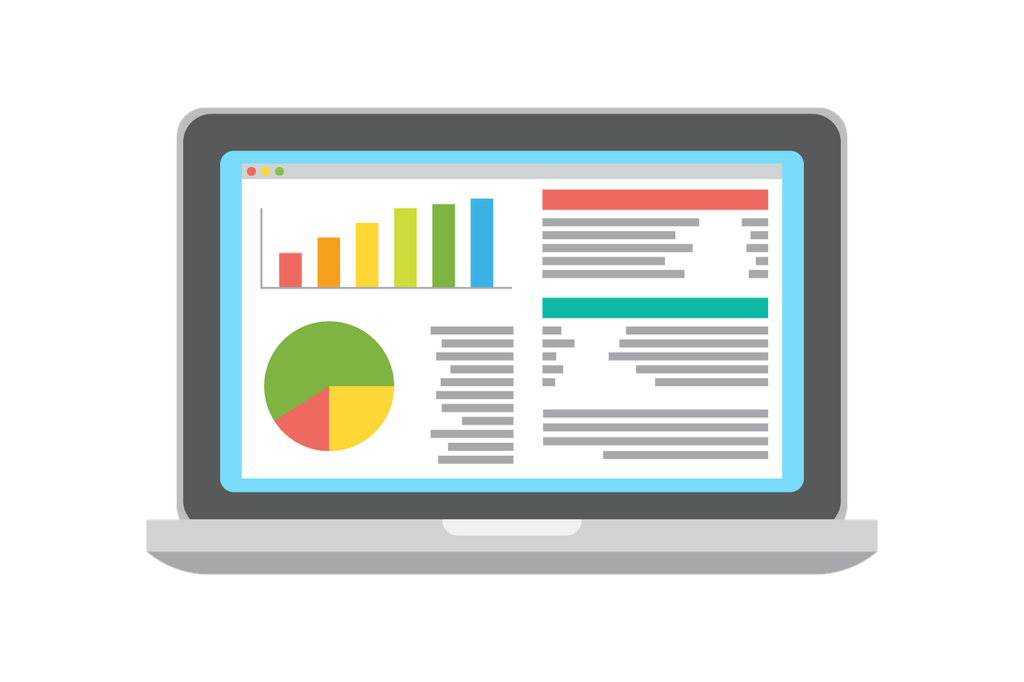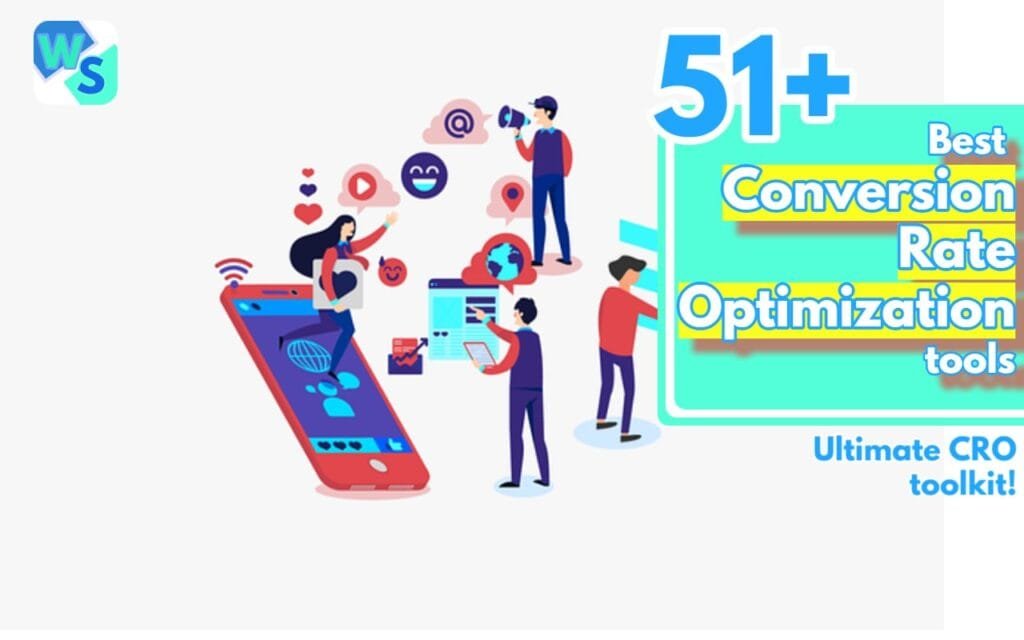Lead generation is the process of attracting and converting these prospects into someone who has indicated interest in your company.
When you engage with leads, you can help them along their buying journey before they reach out to your sales team. That means they’re more likely to convert and become loyal customers.
Lead generation is key to scaling sales and growing a sustainable business.
What Are B2B Leads?
A B2B (business-to-business) lead is an individual or a company that has expressed interest in the services or products your business offers for their own business purposes. As is clear from the term, the leads that you get are businesses or individuals who conduct businesses.
B2B leads fall into three categories:
Marketing Qualified Leads (MQLs), who are sales prospects that exhibit interest in your company’s products or services through interactions with your marketing team.
Sales Qualified Leads (SQLs), who have been qualified by the sales team as meeting business requirements based on criteria such as budget, authority and need.
Customer Leads, who are people or businesses that have purchased from you in the past, or who have created a profile at your site so they can buy from you in the future.
Why Lead Generation for B2B is Different
How to Generate B2B Leads
As you can see, there are many different types of people that could be called a B2B lead. A small business owner who shops for office supplies would likely be considered a B2B lead, as would a marketing manager at an enterprise company who’s looking for a solution to help with their campaigns.
The common thread between all these individuals is that they have the authority to make purchasing decisions for the company they work for. That’s what sets them apart from most other types of contacts and that is why, getting these leads require some more preparation than in other forms of lead generation processes.
Step 1 – Define your target groups
As a business-to-business (B2B) company, you know that your product or service isn’t right for everyone. Your target audience is likely to have specific characteristics that make them good candidates for your offering.
This is why it’s important to define your target group before you begin any lead generation activities. You don’t want to waste resources on prospects who aren’t serious about buying from you, and you don’t want to spend too much time trying to nurture leads who will never become customers.
As the lead generation expert David Ogilvy once said, “You can’t bore people into buying your product.”
Luckily, there are straightforward ways to find out what makes your ideal customer tick. Here are some steps you can take:
- Do a market research;
- Survey your audience;
- Create a proof of concept and test it with your audience;
- Create an MVP and see if you can get leads using that.
Step 2 – Define your Buyer personas
The first step in any successful B2B lead generation campaign is defining your personas.
You can not create a lead generation strategy without having a clear buyer persona in place.
A persona is a semi-fictional representation of your ideal customer based on market research and real data about your existing customers.
When creating your buyer personas, consider including customer demographics, behavior patterns, motivations, and goals. The more detailed you are, the better.
Without clearly defined buyer personas you’re essentially shooting in the dark when it comes to capturing leads. Imagine how difficult it would be to create an effective Facebook ad without knowing the age and location of your target audience? You would waste a lot of money by targeting the wrong people or by targeting too broadly.
The same goes for lead generation: if you’re not talking directly to your ideal customer with relevant content offers, you’re not going to generate many quality leads.
Step 3 – Be present where they are present
Step 4 – Focus on the Most Effective Channels
You can’t reach every single person in your target audience, so you need to focus on the most effective channels that will bring in the leads that convert.
Once you have a process set up for your lead generation, it’s time to focus on maximizing your ROI by improving your conversion rate and goal tracking.
The easiest way to do this is by using Google Analytics, which shows your entire funnel for free.
Use the Pareto Principle and target only those channels that bring you the highest returns in terms of lead generation. This can vary for each business so you need to figure out where you get most of your best leads from.
And then, you need to target those channels the most. This can be anything from increasing your presence on Instagram, growing more traffic to your blog, increasing Facebook ads etc.
In my case, since I offer consultation services, LinkedIn works best for me. So, here’s how you can use LinkedIn to generate B2B leads –
Related Reads:
- Increasing Instagram Followers and Engagement with just 5 Minutes of Work
- How Twitter Influencers Get more Followers, Engagement and Make Money Out of Twitter
- How to Use Instagram Reels for Your Business
- How to Create Instagram Giveaways that Get the Biggest Results for Your Business
Step 5 – Optimize your Website and Landing Pages.
Most businesses start with a website that doesn’t produce much traffic or lead generation. It can be frustrating, especially when you know how important a strong digital presence is.
In order to generate leads with your website, you need to first understand how people interact with your website and what motivates them to fill out a form.
Your homepage is one of the most important pages on your entire website because it presents the opportunity to engage site visitors and tell them why they should stay on your page or click through to another page.
The top of your home page should have a clear headline that communicates a compelling benefit and establishes credibility. You need a strong headline because you only have seconds to capture someone’s attention.
The headline can be supported by an image, video or testimonials that help reinforce your value proposition and build trust. This can include media mentions, awards won or user testimonials.
Your homepage should also have a clear call-to-action (CTA) that tells visitors where they should go next. The CTA button needs to stand out from the rest of the content so visitors know where to click. It’s also important that your landing page copy is relevant and compelling. It should be formatted in a way that makes it easy for visitors to scan and absorb the information quickly.
Step 6 – You should focus on Developing a Lead Funnel.
A lead funnel is a process used to gather information about your prospect. This can include name, email address, phone number, as well as demographic and psychographic data.
The end goal of your lead funnel is to get enough information about the prospect so you can qualify them as either a good or bad fit for your organization.
If they are a good fit, you can deliver the prospect directly to a salesperson or send them marketing materials. If they are not a good fit, you can send them general educational content until they are ready to be qualified by sales.
A lead funnel can be as short or as long as you need it to be, but it often includes these steps:
1) Awareness – Ensure that your audience is aware of an opportunity to take any sort of offer.
2) Interest – Arouse interest from your audience regarding the offer.
3) Consideration – Make them consider the offer, judge its pros and cons etc.
4) Decision – Make sure your audience takes a positive decision after the consideration stage.
Step 7 – You should Use Your Social Media Channels.
One of the most valuable things you can do with your social media channels is to generate leads. This is the lifeblood of any business, and social media can be a great tool to help you get more leads.
To generate more leads on social media, try these tactics:
#1. Make it easy for people to contact you. When people want to get in touch with you, make it as easy as possible for them. Include links to your website, email and phone number in the “About” section of your Facebook page. Make sure you have a “Contact Us” button on your Facebook page that links to a form where people can reach out to you.
#2. Use high-quality images. Images can help educate, inform and inspire your audience. Use high-quality images in your posts that draw attention and encourage engagement. People love to see images of products they can buy or service providers who can help them. Using great images will also ensure that you publish only high quality articles.
#3. Ask questions in posts. When people comment on your posts, it creates more engagement and makes them more visible in news feeds. Asking questions is an excellent way to get more comments on posts.
If you want to engage with your customers and generate more leads, you should:
#1. Follow them first. Follow your followers on the various social platforms so that they know you are interested in their feedback. This will help you get started with building strong relationships with them.
#2. Respond to their tweets, shares and comments. Responding to your followers’ comments and tweets shows that you are listening and are interested in their input. You can acknowledge a positive comment by thanking them or address a negative one by offering assistance and solving the issue as quickly as possible.
#3. Offer free services or promotions. One way of generating leads is to offer free services or promotions that will attract new customers and keep existing ones coming back for more. For example, some businesses offer their followers discounts on certain products or services if they tweet about the business using a specified.
Determine where your Potential Leads are Online.
Not all platforms are created equal, so it’s important to understand where your customers spend their time online before deciding which social networks you should join.
If you’re not sure, start with the big three: Facebook, Twitter and LinkedIn. You can then measure the results of each platform to see which ones are delivering ROI for your business and which ones aren’t worth your investment.
However know that, if you are a new business, Facebook’s organic reach is terrible and you will get nowhere without using Paid Ads.
Step 8 – Create ‘Getting Started’ Guides
In B2B, you often have to really work hard to get people to take a look at your stuff.
You can do this in a few ways, one of which is to create a “getting started guide” that provides useful information about a particular topic, and that also subtly promotes your product or service as the solution.
This is an old tactic — probably just about as old as marketing itself. (And it works great.) But the key is to make sure that the content is genuinely useful and informative. You don’t want it to be too overt and salesy.
A getting started guide is a short, simple step-by-step manual for how to solve a specific pain point. A good getting started guide is focused and practical, providing the exact information someone needs to get up and running with a product or service.
A getting started guide is a short, simple step-by-step manual for how to solve a specific pain point. A good getting started guide is focused and practical, providing the exact information someone needs to get up and running with a product or service.
Also, in case you are selling a product or service, you need to ensure that “Getting started guides” should be the foundation for the product experience you provide your customers. It should be the first thing you send out when someone signs up for a free trial or demo of your product.
A well-designed getting started guide will help you establish a relationship with your customers and turn them into loyal users.
Step 9 – Personalize your outreach and communication
Gone are the days when you could get by with just emailing your leads. Now, with so much content at our fingertips, potential customers expect personalization in every communication.
That’s because they know a lot about you and your business already — thanks to the internet.
Here are some ways to change up your approach to get more leads:
- Nail down your target customer
- Understand customer personas that align with your product or service
- Create a social media presence and build trust
- Create diverse content assets
- Use marketing automation tools
Combine your marketing and sales efforts to get the best results.
1. Be consistent.
2. Master the art of personalization. Use your buyer personas to create customized messages for your prospects, leads, and customers based on their needs.
3. Make it easy for your prospects to take action.
4. Nurture your leads with content that is relevant to them and their industry.
5. Stay in touch with your prospects, leads, and customers through social media channels like Facebook and LinkedIn, as well as through email campaigns.
Marketing automation tools, sales prospecting tools and sales outreach tools can help you generate more sales leads and close deals faster. They also improve the customer experience by personalizing every interaction based on customer data. This leads to more opportunities and bigger deals.
Here are five ways marketing automation improves your lead generation and conversion efforts:
1. Identify your best leads
The first step in the lead generation process is identifying your target audience. You can’t successfully reach and sell to your ideal customer if you don’t know exactly who that is, so it’s important to research your audience and come up with a clear picture of who they are, where they live, what they like to do, what their needs are, and more.
2. Nurture leads with content marketing
Nurturing your customer’s interest in your brand is key to converting customers into buyers. In fact, 74% of companies report that lead nurturing increases sales opportunities by at least 20%. While considering every factor, it is important to understand the branded marketing for better business reach too.
3. Use landing pages for lead capture
A landing page is a web page that is created for one specific purpose: To capture leads from a targeted source – whether that be a PPC ad campaign, email campaign or social media post campaign.
4. Create stronger calls-to-action (CTAs)
More on this on the next section!
Step 10 – Call-to-action (CTA) to Capture Leads
A clear call to action is a statement that tells your audience exactly what you want them to do next. Think about it: if you’re going to go to all the trouble of creating a lead generation campaign, you need to make sure it gets results.
Your CTAs will vary depending on your business model and the type of content you’re using — webinars, white papers, videos — but here are some tips for getting more leads for b2b:
Use a strong verb. “Click here” is weak. “Download now” is better. “Get the top 10 tips for [your topic]” is even better because it’s specific and tells users exactly what they’ll get when they click.
Make your button stand out. Use button placement, color and contrast to draw attention to your CTA. Make sure it looks like a button and test various designs so you know which works best.
Choose the right landing page. It’s important that the page where users are sent after clicking on your CTA is relevant to their interests, so they don’t feel like they’ve been tricked into clicking on something. A good way to ensure this is by making different CTAs with different landing pages available, so people can choose according to their preferences and interests
Step 11 – Create Lead Nurturing Campaigns
Lead nurturing is a process of building trust and relationships with your leads, even if they are not ready to buy.
It’s a common myth that leads are only sales-ready if they’re ready to buy right away. In fact, the average B2B buyer is 57% of the way through their purchase process before they ever reach out to a vendor. That means that your marketing efforts need to be focused on nurturing those leads and guiding them through the whole sales funnel — not just the top.
Identify where you want prospects to go from here.
After someone downloads content from your site or signs up for a webinar, do you want them to –
- Schedule a demo?
- Sign up for free trial?
- Request a quote?
Your campaign should be designed to help them take the next step in their purchasing journey.
1. Start right away
Don’t wait till you have 20,000 leads in your database to start lead nurturing. If a person has downloaded one of your content offers, chances are they need help in a specific area. For example, if they downloaded a guide on how to run Facebook ads, they are most likely interested in using Facebook ads for their business.
It’s time to start the conversation by sending them an automated email sequence with more valuable content from you. And don’t forget to mention that you can further help them with that challenge through your services or products.
2. Continuously enrich your database
This advice seems obvious but it’s amazing how many people forget about it once they already have a long list of subscribers. Don’t just keep adding people to the same drip campaign after they download one thing from you.
Start segmenting them based on their challenges or interests and keep enriching those segments over time by sending more content that matches those interests.
#3. Segment your audience.
Are you reaching out to prospects who already have an account with you? Are they looking for information about pricing vs. product specifications? Segmenting your audience will help you create content that speaks directly to their unique needs.
#4. Personalize your messaging.
If you know someone’s first name, use it! Personalized emails have much higher open rates than emails without personalization, and that’s just one example of how incorporating a prospect’s details into your message can help boost your open-rates and your response rates. You could personalize your emails much farther by mentioning your prospect’s company details, stuff that they are interested in etc., provided you don’t over do it and come off creepy!
#5. Listen and deliver what people really want.
Don’t just send emails based on making your sales. Try to genuinely help your leads and you’ll be able to convert a higher percentage of them.
Step 12 – Analyze, Optimize and Improve
Lead generation campaign success can only be measured through analysis and optimization. Improving your lead generation campaigns isn’t about testing a few random ideas, it’s about process.
#1. Analyze Your Campaigns by Questioning Everything
You need to use a whole lot more than your gut when analyzing the success or failure of a B2B lead generation campaign. You need facts and figures.
Don’t just look at results against projections that you set before the campaign went live. Instead, question every aspect of the campaign itself:
Why did you choose certain types of content? Why did you select particular keywords? Why did you target certain companies?
This is not to say your choices were wrong. Rather, it’s important to figure out why they were right and how they can be improved upon moving forward.
If you don’t develop a clear picture of exactly why certain elements worked (or didn’t work), then you’re doing nothing more than taking potshots in the dark with your next campaign.
#2. Keep it simple. Keep your testing process as simple as you possibly can.
#3. Focus on the big picture.
By spending some time to figure out what’s really going on with your lead generation campaign, you’ll get an overview of what’s working and what’s not working.
#4. Test one thing at a time.
When you’re optimizing any type of marketing campaign, the most important thing is to test just one element at a time. Otherwise, you won’t know what worked and what didn’t work in order to improve future campaigns.
#5. Turn hard data into insights.
Don’t just stop at the data — take the time to use it for insight into how you can improve your lead generation campaigns in the future.
#6. Keep improving it!
You’ll never be done tweaking and improving your lead generation campaigns — there’s always room for improvement!
Optional Section: Find Ways to Connect With Your Target Audience Offline to Generate more B2B Leads
For some reason, many people think that because they know how to use online marketing tactics, they don’t need to do any offline marketing. That couldn’t be further from the truth.
Let me give you a quick example: If your target audience is at a trade show, it’s easy for your competitors to find them by running an online search for “trade shows in [location]”, which will show them all of the trade shows taking place in that area. Then they can find out if any of those trade shows will give them the opportunity to sponsor or exhibit.
It’s not just about spending money on offline marketing – it’s about doing what your competitors aren’t doing so as to stand out from the crowd.
Here are some of the best ways to find ways to connect with your target audience offline:
1. Attend Local Events
There are probably countless events in your industry that take place on a regular basis, from conferences and trade shows to classes and workshops. Attending these events can help you make connections within your industry and generate new leads for your business.
2. Share Your Expertise
One way to make connections within your industry is by sharing your expertise with others. For example, if you have an area of expertise that relates to your business, consider applying for a speaking slot at an event or conference related to your industry.
3. Reach out to your contacts
You probably have a large network of people you know who can help connect you with the right people in your industry. Don’t be afraid to reach out and ask for recommendations. You’ll be surprised how willing people are to put you in touch with someone they know.
4. Collaborate on an event
Reach out to another business or organization that serves a similar audience and see if they would be interested in collaborating on an event. When you work together, you’ll share the same target audience, which means more leads for both of you!
5. Host a business lunch or breakfast seminar
Hosting a lunch or breakfast seminar is a great way to meet face-to-face with potential customers and show off your expertise in your industry. Be sure to invite clients or prospects who could benefit from learning about new trends or developments in your field.
6. Network at Trade Shows
Trade shows are the perfect way to meet people in your industry face-to-face. Just make sure that the trade show you attend is geared towards your target audience — otherwise it will be a waste of time. If you attend a trade show that’s not relevant to you or your business, you won’t meet anyone interested in buying from you.
7. Have an Open House
If you have an office or other place of business, consider hosting an open house for your clients and prospects. Have food, drinks, and entertainment, then invite potential leads or customers to join in on the fun! People will be more likely to come if they don’t feel like they’re being sold. Remember: It’s not about pushing products or services; it’s about networking.
Takeaway:
Lead generation is hard – no doubt about that! But if you follow these 13 steps, you’re sure to skyrocket your lead generation process in no time!
Let me know how it goes. If you need any help, put it down in the comments and we’ll get back to you!
If you also need help for your business’ lead generation, feel free to consult with us.
Read Next: Best Email Marketing Software for Small Businesses

























